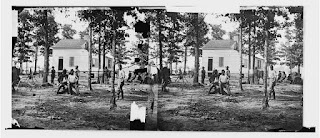Headquarters,
Richmond, Va., June 1, 1862
Special Orders, No. 22
I. In pursuance of the orders of the President, General R. E. Lee assumes command of the armies of Eastern Virginia and North Carolina.
The unfortunate casualty that has deprived the army in front of Richmond of the valuable services of its able general is not more deeply deplored by any member of his command than by its present commander. He hopes his absence will be but temporary, and while he will endeavor to the best of his ability to perform his duties, he feels he will be totally inadequate to the task unless he shall receive the cordial support of every officer and man.
The presence of the enemy in front of the capital, the great interests involved, and the existence of all that is dear to us appeal in terms too strong to be unheard, and he feels assured that every man has resolved to maintain the ancient fame of the Army of Northern Virginia, and the reputation of its general and to conquer or die in the approaching contest.
II. Commanders of divisions and brigades will take every precaution and use every means in their power to have their commands in readiness at all times for immediate action. They will be careful to preserve their men as much as possible, that they may be fresh when called upon for active service. All surplus baggage, broken-down wagons, horses, and mules, and everything that may embarrass the prompt and speedy movement of the army will be turned into depot. Only sufficient transportation will be retained for carrying the necessary cooking utensils and such tents or tent-flies as are indispensable to the comfort and protection of the troops.
By order of General Lee:
W. H. Taylor,
Assistant Adjutant-General








